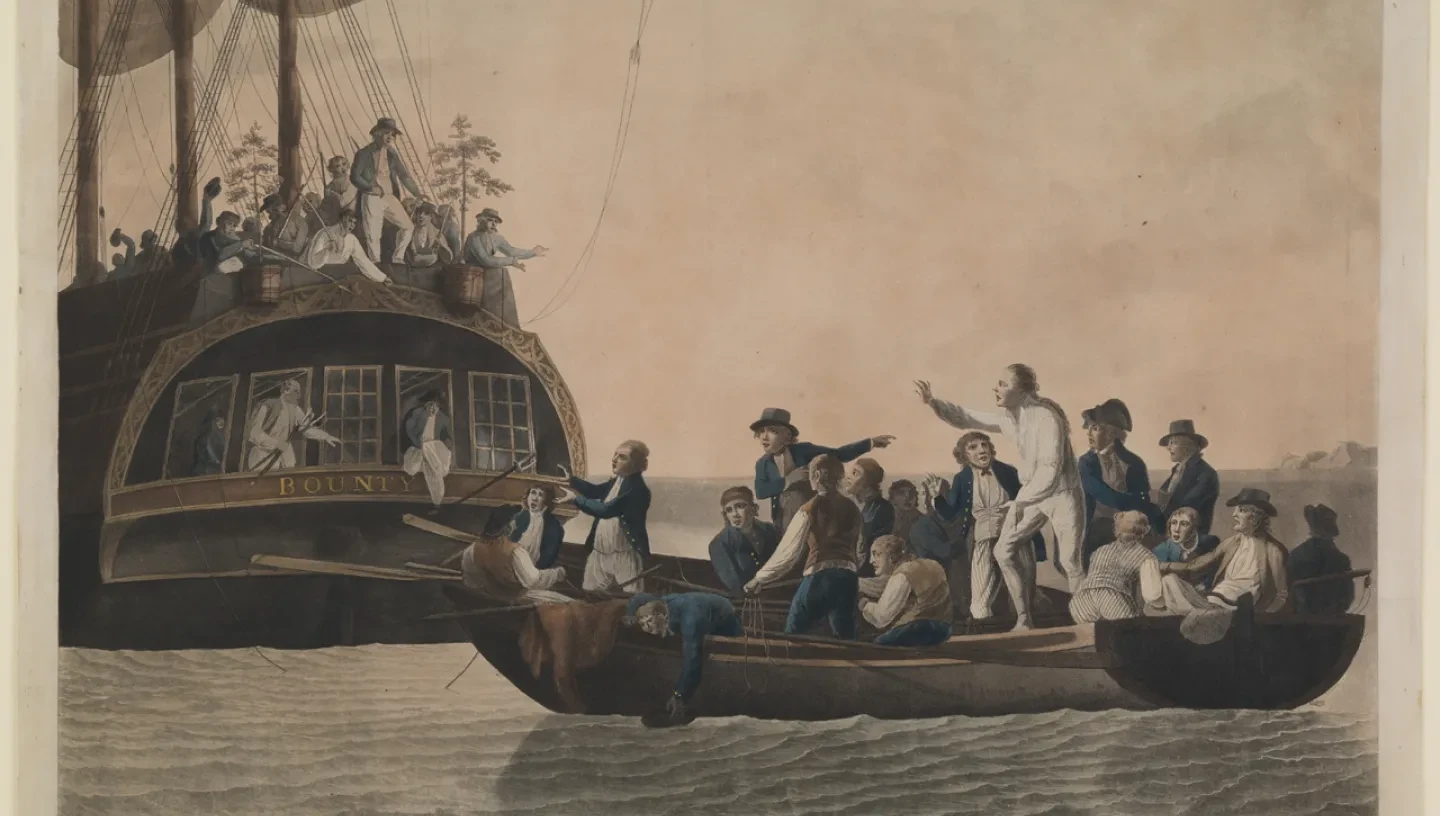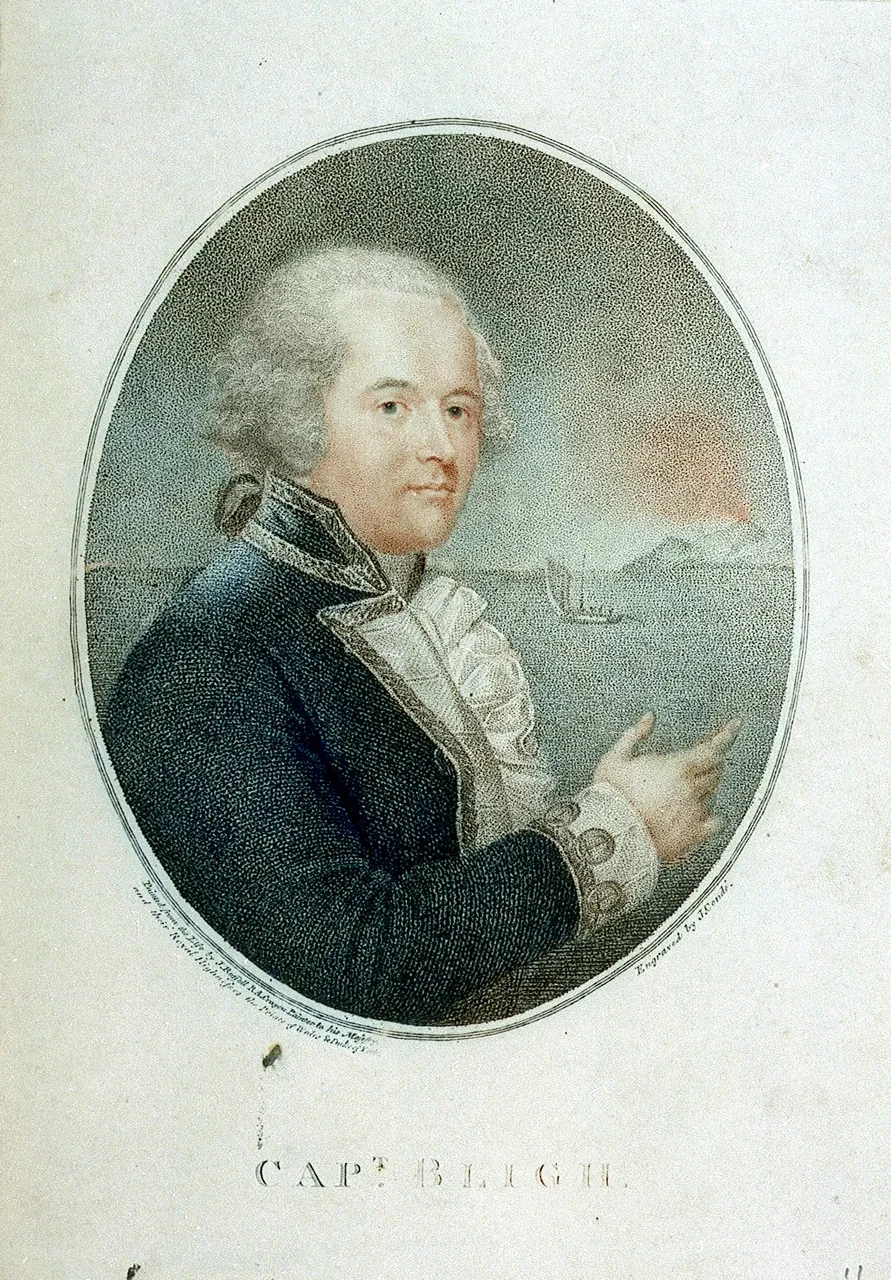
William Bligh was an officer in the Royal Navy and was the victim of a mutiny on his ship, the Bounty, in 1789.
Bligh (1754–1817) had a reputation for having a volatile temper and often clashed with his fellow officers and crewmen. His crew mutinied against him during a return trip from Tahiti in 1789.
Early career
Bligh, the son of a Plymouth customs officer, went to sea aged seven as a captain's servant on board HM Monmouth. He became a skilled young seaman and navigator and in 1776, aged 22, he was appointed sailing master on HM Resolution, serving under Captain James Cook on his final Pacific voyage. He did fine chart and survey work, published alongside Cook's journals, but resented the lack of credit received for this.
Find out more about Captain James Cook.
1789 Mutiny on the Bounty
By 1781 he had made lieutenant, and six years later, he was recommended the role of acting captain to command the HM sloop Bounty. This was to lead a mission to transfer breadfruit from Tahiti to the Caribbean, as food for the slave labour force used on plantations there.
After five months on Tahiti, master’s mate Fletcher Christian led a mutiny on board the Bounty on 28 April 1789. Eighteen mutineers set Bligh and 18 of his loyal crewmen adrift in a small boat. Bligh, however, was a skilled navigator and managed to sail them nearly 4000 miles to Timor, in the Dutch East Indies. From there, he brought his men back to England to report the mutiny, arriving 14 March 1790.
Find out more about the mutiny on the Bounty.
1791 Return to Tahiti
Bligh was tried for the loss of the Bounty but acquitted and promoted to captain. In August 1791 he once again set sail for Tahiti, but this time he was better prepared, with two ships HMS Providence and Assistance. Despite difficulties it was a success; Bligh transferred a cargo-load of breadfruit to the West Indies and returned to Britain with samples of ackee fruit from Jamaica, which he sent to the Royal Society.
However, upon his return Bligh found his reputation had been tarnished thanks to the trial of the Bounty mutineers. He was put on half pay and unemployed for 18 months. Bligh returned to active service in 1795 and served with distinction under Admiral Duncan at the Battle of Camperdown in 1797 and with Nelson at the Battle of Copenhagen in 1801.
1808 Rum Rebellion
In 1806 Bligh was appointed Governor and Captain-General of New South Wales, Australia. Under his strict authority, he set out to stamp out the corruption that was rife among officials and the military in Australia at that time. His interference was not met kindly and in 1808 the military deposed him and put him under house arrest – this was known as the ‘Rum Rebellion’.
Bligh returned to Britain in 1810 and in 1811 was promoted to Rear-Admiral, but his days of active service were over and he died in 1817.
Visit Pacific Encounters
Discover relics from the Bounty in Pacific Encounters, one of four new galleries at the National Maritime Museum. Reflect on the complex legacy of European exploration and how this has shaped the Pacific as we know it today.
